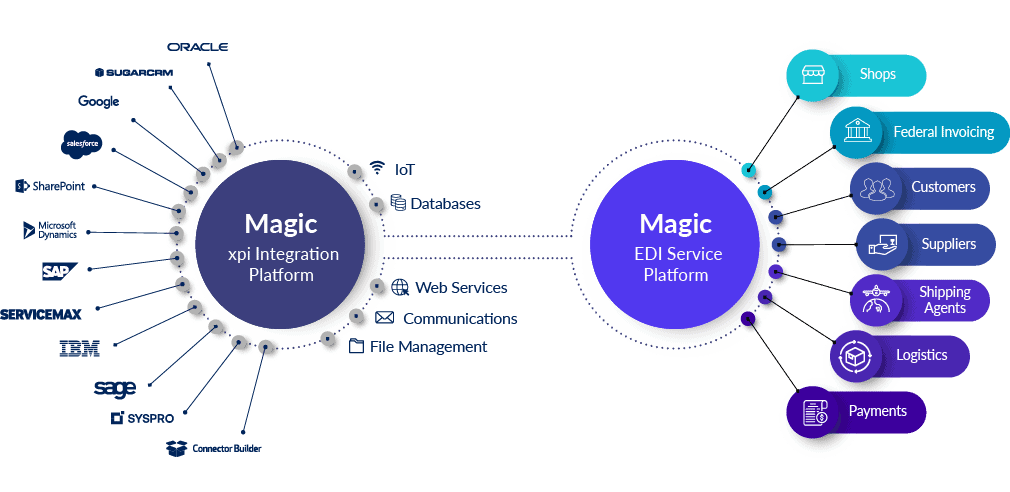Is your EDI program (or lack of a program) causing stress?
Whether you already have an EDI program or are trying to figure out what to do, you are not alone in worrying about your EDI. EDI is a struggle for many, as it needs to be managed 24×7, 365 days a year. There are lots of common challenges, such as conversion errors, security gaps, high costs, and poor interoperability. The main issue that usually keeps people up at night is the worry, “Is it working?”.
What are the signs that your EDI isn’t working? Customers who work with Amazon know that any hiccups in EDI can quickly lead to penalties if they are late with any updates. Another common sign is the constant hassle with partner changes, whether it’s onboarding new trading partners or updating existing partner information.
How can a company manage the constant updates, ensure their processes are running smoothly, and provide timely updates to their partners? Below we explore three different methods companies are using that fit their specific requirements for an EDI program.
3 Ways to Manage Your EDI
1st Method: Take the reins and manage it internally
Companies with a small number of trading partners and an engaged IT team often use a tool such as Magic xpi to build end-to-end EDI workflows. Magic xpi is doing the communication and translation, though it is limited in terms of the kinds of communication you can do. The benefits of this approach are simplicity and low cost, especially in cases where the integration is simple, and if your professional services team has EDI experience.
2nd Method: Utilize an EDI service to complement your team
Another avenue to take is utilizing an EDI service that has a pre-built solution. With this method the communication side is handled, but how do you connect to your systems? Often EDI providers have basic connectors, however if you need to use logic or connect to multiple data sources, you can quickly outgrow even a fully featured EDI provider. An additional downside to a pre-built solution is that it often doesn’t fit your specific needs. Companies find they need to add other EDI solutions to fill in the gaps, however juggling multiple providers can become a cost and logistical nightmare.
3rd Method: More than ‘just’ EDI. Integration as a service.
The final method we will discuss is a full-service platform such as the Magic EDI Service Platform. Here we take the wheel with a complete end-to-end solution. Not only will we handle the communication and integration, we also provide an EDI team that will work with your partners for onboarding, monitoring and managing updates. While this may sound intimidating, a full-service platform is especially helpful for companies that don’t have a traditional EDI team, or are trying to scale their use of EDI with the same size team. A service helps reassure you 24×7, 365 days a year that everything is updated and running effectively.
Utilizing an EDI Service Platform helps tremendously with managing all of the core interactions with customers and the configuration of the software. This takes the burden away from your team allowing you to focus on your business, not the mechanics of EDI.
The Magic EDI Service Platform Advantage
- Easily add trading partners– Our team will use our extensive library of pre-built connections to quickly add trading partners without the need for custom work.
- Seamless workflow integrations– Magic’s extensive integration experience with Magic xpi – which is offered as part of the Magic EDI Service Platform – reduces the work to connect with your systems.
- Support any data format– the combination of our tools allows us to support all forms and protocols. Our hub and spoke model is well-suited to service your needs beyond a traditional VAN service offering.
- Full visibility into every transaction– we offer full visibility into every transaction, so even though our team is managing the EDI program, you get visibility via a dashboard and portal. You can then use that data internally as needed, such as reporting on individual transactions.
- Multi-level live monitoring– if there is a problem, we are the first ones there and will get ahead of any issues. There is a dedicated 24×7 monitoring team that monitors the infrastructure, and ensures we are meeting SLAs. Our emergency services team is always available if there is a critical issue.

Overall, EDI is not a one-size-fits-all solution. From simple built-in integration, to an EDI service, there is no more reason to worry about your EDI project. Contact one of our EDI experts to discuss how Magic can benefit your EDI program’s specific needs!




